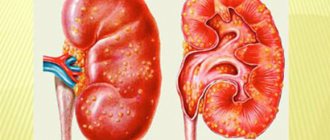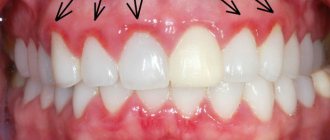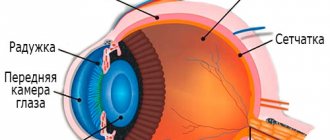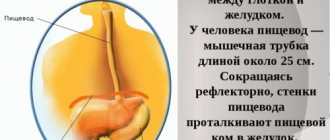Let's define the terms
ARI and ARVI are abbreviations. The abbreviation "ARI" stands for "acute respiratory disease." “Respiratory” means it affects the organs of the respiratory tract, namely the nose, nasopharynx, oropharynx, larynx, trachea, bronchi, lungs. The cause can be both viruses and various bacteria.
How does “ARVI” stand for? This is an acute respiratory viral disease. That is, this is an acute respiratory infection that is provoked only by viruses. Viruses live on the planet in huge quantities, but the most common among them are rhinoviruses, as well as influenza and parainfluenza pathogens.
Consequently, acute respiratory viral infection is one of the types of acute respiratory infections. The difference between acute respiratory infections and acute respiratory viral infections is that acute respiratory infections are diagnosed if the doctor cannot, based on symptoms, determine the causative agent of the disease - a virus or bacteria.
What is the flu? Influenza is a viral disease that causes severe complications, very often heart defects. You should know how to recognize a flu infection in order to seek medical help in time.
How can you get sick?
Often, a patient is diagnosed with ARVI after he has been in contact with a patient with influenza or parainfluenza. There is a risk of transmission of infection through talking, kissing, or shaking hands. For this reason, the viral infection spreads very quickly in crowded places: passages, subways, shopping centers, educational institutions. The mechanism is simple:
- a sick person coughs;
- viruses fly out with sputum and saliva;
- scatter in the air.
Usually, dust particles along with viruses do not reach a person immediately. They first settle on the floor, and only then rise into the air.
Poor indoor ventilation and excessively high humidity become a favorable environment for viruses and bacteria. This is especially common in autumn, spring and winter. ARVI epidemics can easily be explained by a decrease in temperature and hypothermia of the body. In addition, it is during the autumn-winter period that people suffer from:
- vitamin deficiency;
- weakening of the body.
Infections affect the organs of the upper respiratory tract, causing inflammation, coughing attacks, and pain. The body temperature immediately rises, which indicates the involvement of the bronchi and alveoli in the inflammatory process.
If a rhinovirus infection has begun, the patient will feel chills, muscle pain, and nasal congestion. It is possible to breathe only after instilling a drop into the nose. However, drops cannot be used for a long time.
To avoid infecting other family members, the patient should:
- wear a special gauze bandage;
- use only your own personal hygiene items;
- process them systematically.
Otherwise, the whole family will get sick within a few days.
Since the main source of infection is mucus and saliva, you should wash not only personal belongings, but also your hands with soap as thoroughly as possible.
During seasonal outbreaks of disease, you should refrain from contacting your hands with your lips, face, and do not touch your nose.
Manifestation of diseases
The first signs of the disease are as follows:
- rhinitis;
- increase in body temperature up to 38 ° C;
- the temperature may remain low-grade;
- a sore throat.
- Flu symptoms:
- a sharp increase in temperature up to 40 ° C;
- weakness in the body;
- loss of desire to eat;
- muscle pain, headache.
If the causative agent of acute respiratory infections is not a virus, but a bacterium, then the body temperature may remain around 37 °C for some time. Often with a bacterial infection there is no runny nose. With a sore throat, the patient has a white coating in the throat and swallowing food is difficult. In many cases with acute respiratory infections, the mucus that is rejected has an unusual greenish color, and purulent discharge is present.
As we see, the symptoms of acute respiratory infections and acute respiratory viral infections are very similar; not always even an experienced doctor can distinguish acute respiratory infections from acute respiratory viral infections. Therefore, diagnostics often require additional tests - blood, throat swabs, the deciphering of the results of which will allow us to identify the pathogen.
A cold is commonly called hypothermia. If for some reason the body gives off too much heat, then soon its defenses weaken, and it becomes helpless against various pests. Then microorganisms begin to actively multiply, causing inflammation. That is, when asked whether an acute respiratory infection is called a cold or an acute respiratory viral infection, one can answer that it is both, only the root cause is hypothermia of the body.
Pest microorganisms infect the respiratory system, causing inflammatory processes. As a result, the disease begins. Sometimes a bacterial infection is added to a viral infection. Then they talk about complications. In order to avoid them, it is not recommended to visit places with large crowds of people at the first symptoms of a cold or during epidemics.
Acute respiratory infections - symptoms and possible complications
Since infections affect the upper respiratory tract, a number of acute respiratory infections symptoms can be identified that are characteristic of all types:
- sore throat;
- cough;
- hoarseness of voice;
- runny nose;
- feeling overwhelmed;
- muscle pain;
- temperature increase.
Some acute respiratory infections lead to enlarged lymph nodes, blockage of the bronchi, chest pain, the development of pharyngitis and pneumonia. If, upon diagnosis of acute respiratory infections, treatment was insufficient or not carried out at all, then patients risk facing serious complications. Most often infections lead to:
- clouding of consciousness;
- hemorrhages in internal organs;
- nosebleeds;
- damage to peripheral nerves;
- suffocation due to narrowing of the larynx;
- exacerbations of bronchial asthma;
- severe pain when swallowing food.
ARIs are especially dangerous during pregnancy, as they can threaten the health of the baby, cause irreversible changes in the fetus or premature birth.
How are these diseases transmitted?
The difference between ARVI and bacterial acute respiratory infections is that viruses often spread through the air with particles of mucus or saliva of the sick person when sneezing or coughing. You can become infected with the flu or a bacterial acute respiratory infection by picking up an object that has come into contact with saliva or mucus from a patient.
Microbes penetrate the digestive organs and are transferred to the mucous membranes, causing conjunctivitis or other inflammatory processes. If there are a lot of infected people, health workers talk about an epidemic. In this case, you should be extremely careful when visiting crowded places. In the table you can see the difference between these two concepts.
| Criterion | ARVI | acute respiratory infections |
| Nature of the disease | viral | bacterial; viral; allergic. |
| Medicines | symptomatic + drink a lot and walk | antibiotics, symptom relievers, antihistamines |
Treatment of adults
To overcome acute respiratory viral infection in adults, you must adhere to the following recommendations:
- stay in bed;
- drink a lot of warm, but not hot liquid - compote, herbal infusions, teas;
- you need to use fever-reducing medications only if the temperature is very high;
- clean and ventilate the room more often;
- use a humidifier;
- rinse your nose with saline solution;
- some specialists prescribe antiviral drugs. You need to know that the effectiveness of many of these drugs has not been proven. The exception is drugs from the group of neuraminidase inhibitors, which can be used exclusively in a hospital setting;
- as prescribed by a doctor, use symptomatic remedies to alleviate the condition, such as vasoconstrictor drops, antiseptics for the throat with an analgesic effect. It must be remembered that vasoconstrictor drops are not used for longer than 5 days, as they can be addictive.
If the viral infection does not go away within a week and all signs of the disease persist, the doctor may prescribe additional examinations, such as a chest x-ray. Pneumonia often occurs in older adults and weakened people.
Therefore, they are hospitalized to avoid adverse consequences. Sometimes the disease is complicated by otitis - an inflammatory process in the ear, or meningitis - in the meninges. Therefore, any cold is potentially dangerous and requires treatment in children and adults.
How does acute respiratory infection differ from other types of diseases? There is a difference in treatment between acute respiratory infections and acute respiratory viral infections. ARI differs from ARVI in that for bacterial acute respiratory infections, doctors use only antibiotics. Antibiotics do not kill viruses, so they are not suitable for viral infections. There are acute respiratory infections of an allergic nature, which manifests itself in the form of rhinitis.
Such allergies can be overcome with special antihistamines. In this case, acute respiratory infections are called allergic. You need to know that when using drugs, an allergy to their components may occur, in which case the use of the drug should be stopped. When self-medicating, there is a risk of harming yourself, so it is better to go to the doctor.
How to treat ARVI in an adult - medications
Chemotherapy drugs are prescribed to suppress the reproduction of the virus; in the future, it cannot enter a healthy cell and, accordingly, spread.
But each drug is effective in treating only its own virus. It will not be effective against other groups of the virus. In addition, side effects .
Homeopathic remedies (“Aflubin”) are used mainly to prevent the disease. Immunomodulators - "Bronchomunal", "Immunal" are considered less effective, their effect develops over time. They are recommended for the prevention of respiratory diseases and acute respiratory viral infections.
Arbidol acts against influenza A and B viruses and other respiratory diseases. Viferon is used to treat any respiratory disease , including influenza. Intranasal spray Grippferon has the same property.
Interferon is a chemical compound that stimulates the body's cells to produce their own interferon. After taking Anixin, the effect is achieved after 4 hours and can last up to 20 hours. Cycloferon - quickly penetrates the blood, as it has a low molecular weight compound. The drug is effective in the treatment of ARVI in adults.
Systemic therapy
It is necessary to start taking antiviral drugs immediately. The disease begins when a virus enters the body, so there is no need to use antibiotics to avoid making mistakes in treatment.
Antiviral drugs suppress and destroy viruses in the body, increase immunity and speed up the recovery period.
You should start taking them in the first hours after ARVI symptoms appear. If the illness lasts three days and you have not taken any medications, then these drugs will not bring you any benefit either.
Treatment of children
Acute respiratory infections and acute respiratory viral infections are more common in children because, unlike adults, their immune system is not yet fully strengthened. Young children suffer from diseases that are passed on to each other in children's groups. Symptoms of viral infection are the same in children and adults. They differ in that they manifest themselves more acutely in a child. To combat infection, doctors recommend adhering to the following rules:
- do not force feed. If a child does not want to eat, it means that his body is struggling, he should not be disturbed; humidify the air, ventilate the room to create favorable conditions for the functioning of the mucous membranes;
- wash objects and floors in the children's room more often;
- rinse your nose with a salt solution, which you can buy or make yourself;
- maintain the correct temperature in the children's room. The air should be cool, but so that the child does not freeze;
- when the temperature rises, use antipyretics with paracetamol or ibuprofen; Expectorants should not be used, as they can only worsen the situation. To prescribe such drugs, it is necessary to show the child to a pediatrician.
Treatment of ARVI with folk remedies
A common cold at home.
At the first signs, you should drink more fluids. It is better if it is a vitamin drink: chamomile infusion, tea with raspberries, linden or mint. The liquid should be 35-36C, then it will be absorbed faster into the body. This helps relieve intoxication and remove the virus from the body.
A high temperature should be brought down only if it has risen above 38.5C. Body temperature is a protective reaction of the body; viruses die at high temperatures.
Onion inhalations are wonderful. Peel the onion, cut into small pieces, wrap in several layers of bandage. Place it on your nose and breathe. Onions have antiseptic properties and will help destroy viruses if they get on the nasal mucosa. It’s even better to do inhalations with a nebulizer using various herbs. In combination with onion inhalation, the results of treatment will be faster.
For a sore throat, use the following recipe:
Brew a tablespoon of chamomile flowers with a glass of boiling water, let it brew for 30 minutes, then strain. Rinse 3 times a day.
For a sore throat, baking soda and salt are very helpful. Add 1 teaspoon each of soda and table salt to a glass of warm boiled water, stir until the grains disappear. Gargle morning and evening.
Cough remedy:
Peel the black radish, grate it on a fine grater and squeeze out the juice. Mix it with 1 tablespoon of honey. Take 2 tablespoons 15 minutes before meals 3 times a day.
Grate the onion head. Add a tablespoon of honey to the onion pulp and stir. Take a teaspoon 2-3 times a day.
Recipe for a runny nose:
If a runny nose has just begun, the juices of medicinal plants can cope with it perfectly. They have a vasoconstrictor and anti-inflammatory effect: aloe, sea buckthorn, rose hips.
Instill the juice 2-3 times a day, 1-2 drops into each nostril.
High temperature remedy:
There are situations in which it is not at hand. If your body temperature has reached high levels, you can lower it at home.
To do this, take off your clothes, down to your underwear.
Wet the towel with cool water and wring it out. Wipe the skin with a damp towel, starting with the face, then arms and legs. This will help reduce the temperature by 1.5 -2 C. You can also apply cold compresses to the forehead, armpits, wrists, popliteal area and feet.
Since toxins are eliminated along with sweat, prepare diaphoretic tea with thyme, St. John's wort and linden. The air in the room should be cool.
Prevention of acute respiratory infections
All people sometimes get sick, since viruses spread very quickly through the air from one person to another upon contact. Therefore, such diseases cannot be completely avoided if you live in society. However, there are ways to reduce the risk of disease. Vaccinations, such as the flu or pneumococcal vaccine, can be used to prevent viral illnesses and some bacterial ones.
If bacteria can be killed with antibiotics, then it is better to protect against viruses with vaccinations. Thus, knowing the main differences between the two diseases, it is easier to prevent illiterate treatment and take preventive measures.
Even if you can boast of good health, you have probably at least once in your life encountered the symptoms of a cold - sore throat, nasal congestion, coughing and sneezing. No wonder: acute respiratory diseases are statistically the most common group of diseases faced by the inhabitants of our planet.
Fortunately, most of these diseases respond well to treatment and disappear in about a week, leaving no complications. However, doctors do not advise taking even the most trivial infections lightly: any illness is a risk of compromising your health and ultimately ending up in the hospital.
Drugs to combat ARVI
For a viral infection, non-steroidal antiviral drugs are prescribed, for example, Paracetamol, Ibuprofen, Diclofenac. They will relieve the pain.
There is a need to take antihistamines, vasoconstrictor nasal drops, medications for sore throat and cough. All medications must be taken together. It will make breathing easier, soften cough, relieve muscle tension, and stop the inflammatory process.
When the bronchi are damaged after ARVI and influenza, antibacterial therapy with antibiotics and phytoncides is carried out. If only a viral infection is detected, antibiotics are not needed, because they are not able to affect the virus!
With inadequate treatment or its complete absence, complications are possible:
- pneumonia;
- pharyngitis;
- laryngitis;
- bronchitis.
Depending on the severity of the patient’s condition, they are prescribed to take appropriate medications and vitamin preparations, drops.
ARI and ARVI: is there a difference?
Common people often get confused by the abbreviations acute respiratory infections and acute respiratory viral infections, not understanding what their difference is and how to relate these abbreviations to concepts such as “cold”, “pharyngitis”, “laryngitis”, “tracheitis”. Their concern is justified - after all, the correct tactics of subsequent treatment depend on the specific diagnosis.
Acute respiratory diseases (ARI) is the most general definition, including any infectious diseases of the respiratory tract accompanied by “cold” symptoms. The cause of acute respiratory infections can be not only viruses, but also fungi, and extremely rarely - protozoa.
Doctors make the diagnosis of “ARD” in a situation where they know nothing about the causative agent of the infection, although its manifestations are obvious. Without specific tests, the results of which often take longer to wait than the illness lasts, it is difficult to say anything definite, so experts limit themselves to this vague concept.
Acute respiratory viral infection (ARVI) is a slightly more specific diagnosis. Quite a few - after all, there are more than three hundred viruses that can cause acute respiratory infection [1]. This includes the well-known influenza virus, rhinovirus, coronaviruses, respiratory syncytial virus and others.
In practice, it turns out that up to 95% of all acute respiratory diseases are viral in nature. So the division into acute respiratory infections and acute respiratory viral infections is largely arbitrary. That same banal cold that we all encounter more than once a year is a viral infection.
Pharyngitis, rhinitis, tracheitis, bronchitis, laryngitis and other terms mean the localization (location) of the pathological process. If the causative agent of an acute respiratory infection has infected the pharynx, then the diagnosis is pharyngitis, if the nose is rhinitis, if the trachea is tracheitis, if the bronchi are bronchitis, if the larynx is laryngitis. However, it is not necessary that each cold spread to only one zone. Often pharyngitis turns into laryngitis (first the patient complains of a sore throat, and then his voice disappears), and tracheitis turns into bronchitis.
Both acute respiratory infections and acute respiratory viral infections can occur at any time of the year, because microbes are constantly in the environment. However, in the summer, when people's immunity is most resistant to hypothermia, as well as in the depths of winter, when due to low temperatures the concentration of pathogens in the air is low, there are almost no mass outbreaks of diseases of this group. The “high” season for ARVI is September–March, when children’s groups are formed, people return from vacation, and in the spring the body’s defenses are running low.
Causes of diseases
As already mentioned, more than 300 viruses are known that can cause acute respiratory infections and acute respiratory viral infections. If we talk about the period outside the influenza epidemic, up to 50% of all cases are rhinovirus infection, up to 15% are coronaviruses, another 15% are influenza viruses, while enteroviruses and adenoviruses each account for approximately 5% of all cases of disease [2].
As for acute respiratory infections of bacterial origin, which, we remind you, account for no more than 5% of all cases of respiratory infections, the cause can be pneumococci, staphylococci, streptococci, mycoplasmas and Haemophilus influenzae.
Despite the widespread prevalence of acute respiratory infections, it is quite possible to reduce the risk of getting sick - for this you need to get a preventive vaccination in advance. So, in Russia you can get vaccinated against the flu (at the beginning of the epidemic season, doctors can already guess what strain will be active this year and select the appropriate drug), against pneumococcus and against Haemophilus influenzae. These diseases have the most serious health consequences of any acute respiratory infection, so doctors strongly recommend considering vaccination for children and adults with weakened immune systems.
There is a stereotype that infection with acute respiratory infections and acute respiratory viral infections is transmitted from person to person by coughing and sneezing. In fact, infection is much more likely to spread through dirty hands. For example, someone sneezed into their palm or wiped their snotty nose with their fingers, and then grabbed the handrail in the transport or the basket in the supermarket. This is often enough to transmit the virus, which persists in this way for about a day, to another person.
There are also features inherent in individual infectious agents. For example, enteroviruses enter the body with food, and in the future can cause not only cold symptoms, but also nausea, vomiting and diarrhea (popularly this infection is often called “intestinal flu”).
Symptoms of acute respiratory infections and acute respiratory viral infections
The speed at which the disease develops depends on the specific virus. Thus, 10–12 hours after contact are enough for the development of rhinovirus infection, and the incubation period of the influenza virus lasts up to 7 days (most often about 2 days).
But in general, the symptoms of ARVI or, simply put, a cold, are familiar to everyone. These are fever, runny nose, sneezing and sore throat, which are followed by a cough after some time. Intoxication with viral reproduction products causes general weakness and headache. Typically, the illness is most severe in the first 3-4 days, and by the end of the week most symptoms disappear, with the exception of general weakness, which persists for a period of two weeks with a rhinovirus infection to a month with an adenovirus infection.
We should also talk about flu symptoms. Doctors of the old school called it “dry catarrh” - that is, inflammation without mucus secretion. The flu begins acutely: the temperature rises sharply to 38°C and above, a headache appears, general weakness, aches in the muscles and lower back, a sore throat and a cough begins. But at the same time, there is no runny nose in the first few days with the flu, nasal congestion and nasal discharge appear a little later, and sometimes do not appear at all.
The course of diseases and their consequences
Typically, uncomplicated acute respiratory viral infections go away in 1–2 weeks. But it also happens that after the initial relief of the condition, a “second wave” begins: the temperature rises again, and the general condition becomes almost worse than it was at the beginning. As a rule, this means that a bacterial infection has joined the viral infection, and the disease has entered the complication stage.
Symptoms
The manifestations of so-called “colds” are similar to each other, regardless of the type of pathogen, which can only be identified in laboratory conditions. Treatment of acute respiratory viral infections of various etiologies involves the prescription of the same type of medications, so differential diagnosis is carried out only in complex cases. During the initial appointment, the doctor focuses on clinical signs. From the definition of the disease, we can conclude that the symptoms of a cold and ARVI are no different. The patient complains of such unpleasant sensations as:
- pain and sore throat;
- chills and fever;
- nasal congestion and watery discharge from it;
- dry barking cough;
- pain in the eyes and lacrimation;
- body aches and muscle pain;
- general weakness and malaise.
A sore and sore throat is a symptom of ARVI.
The therapy provided is primarily aimed at strengthening the immune system and eliminating painful symptoms. During this period, a weakened body becomes especially vulnerable to bacterial infection, so cases of its addition are often diagnosed.
Antibiotics do not affect the activity and vital activity of the virus. They are prescribed only if the bacterial nature of the disease is confirmed, which is determined based on the results of a special laboratory analysis.
Having figured out how to distinguish a cold from an acute respiratory viral infection, let's summarize: hypothermia reduces the body's immune defense and makes it more susceptible to attack by viruses. However, a frozen person does not always get sick, and cold is not the root cause of the disease. Strong immunity and regular hardening procedures increase the body's resistance.
Epidemiology [edit | edit code]
ARVIs are found everywhere and are the most common infectious disease, so it is impossible to fully take into account the incidence. Children in the first months of life practically do not get sick (thanks to relative isolation and passive immunity received transplacentally). The highest rate is observed among children in the first years of life, which is associated with their visits to child care institutions (the incidence of ARVI during the first year can reach 10 times a year). The decrease in incidence in older age groups is explained by the acquisition of specific immunity after the disease. On average, every adult experiences ARVI at least 2-3 times throughout the year. The share of specific diseases in the overall structure of ARVI depends on the epidemic situation and the age of the patients. There are cases where the clinical manifestations of the disease are minimal, and there are no symptoms of infectious toxicosis - such patients suffer from ARVI “on their feet”, being a source of infection for children and the elderly. Currently, the viral nature of almost all so-called colds
diseases [1].
Source of infection [edit | edit code]
The source of ARVI is a sick person or, in some cases, an animal or bird, which poses a danger from the end of the incubation period until the end of the febrile period.
Transmission of infection [ edit | edit code]
Almost the entire group of acute respiratory viral infections is transmitted mainly by airborne droplets (inhalation of an aerosol generated by coughing or sneezing), as well as by the oral route (kissing, as well as shaking hands or touching contaminated surfaces with subsequent introduction into the mouth). Sometimes transmission of the infectious agent is possible through household items, toys, linen or dishes [1].
Receptivity [edit | edit code]
Susceptibility to the disease is general and high. Children in the first months of life born to mothers with circulating antibodies to ARVI pathogens are relatively unsusceptible. In the absence of protective antibodies in the mother, even newborns are susceptible to ARVI. After an infection, as a rule, persistent specific lifelong immunity is formed. Recurrent disease can be caused by infection with another pneumotropic virus (causing ARVI) [1].
Pathogenesis [edit | edit code ]
In the initial period of the disease, the virus multiplies in the entrance “gates of infection”: the nose, nasopharynx, larynx, which manifests itself in the form of pain, runny nose, soreness, and dry cough. The temperature usually does not rise. Sometimes the mucous membranes of the eyes and gastrointestinal tract are involved in this process.
Then the virus enters the blood and causes symptoms of general intoxication: chills, headache, aches in the back and limbs. Activation of the immune response leads to the body’s production of antibodies to the virus, as a result of which the blood is gradually cleared of it, and the symptoms of intoxication weaken.
At the final stage of an uncomplicated acute respiratory viral infection, the respiratory tract is cleared of the layers of epithelium affected by the virus, which manifests itself as a runny nose and wet cough with the discharge of mucous or purulent sputum.
Differential diagnosis [edit | edit code]
Due to the wide prevalence and heterogeneity of various acute respiratory infections, there is often a need for a differential diagnosis in order to establish the exact cause of the disease. Knowledge of the principles of differential diagnosis of various acute respiratory viral infections is necessary to prevent various complications and correct the patient’s treatment tactics. The most common pathogens of ARVI are parainfluenza (milder course than influenza, damage to the larynx with the risk of suffocation in children), adenoviral infection (less pronounced onset than influenza, sore throat and lymphadenopathy, damage to the conjunctiva of the eyes, severe runny nose, possible damage liver), infection with respiratory syncytial virus (damage to the bronchi and bronchioles, the possibility of developing bronchopneumonia, a milder and longer course than influenza) [3].
Symptoms of dyspepsia (vomiting, loose stool) should alert you to rotavirus infection
.
In case of severe inflammation of the tonsils (especially common with adenovirus infection), it is necessary to exclude a sore throat
and
infectious mononucleosis
.
Severe fever may raise suspicion of measles
,
scarlet fever
, etc.
Of the more exotic diseases, the first symptoms of which may resemble ARVI, hepatitis
,
AIDS
, etc., therefore, if symptoms of ARVI in the previous few weeks were preceded by events dangerous in terms of infection with these diseases (contact with a patient with hepatitis A, unprotected sexual contact with a casual partner, intravenous injections in unsterile conditions), you should immediately contact to the doctor.
Etiological factors and development mechanism
Science knows more than two hundred pathogens of ARVI, the common feature of which is the transmission mechanism and clinical manifestations. In practice, the most common cause of infections are influenza viruses A, B, C, parainfluenza, adenovirus, rhinoviruses, respiratory syncytial viruses, and less commonly, Coxsackie and ECHO enteroviruses.
High-risk groups include:
- children under five years of age;
- adults over 60 years of age;
persons with a history of chronic diseases (heart failure, diabetes mellitus, pathologies of the urinary system);
- people with immunodeficiency conditions;
- smokers and alcohol drinkers;
- teachers, educators, doctors, public transport workers, sellers;
- pregnant women at any stage.
The source of infection is a sick person. The pathogen enters the body in two ways: airborne droplets and household contact. In the case of airborne transmission, the virus from a sick person, when sneezing and coughing, is released with saliva and sputum into the external environment and penetrates through the mucous membrane of the respiratory tract and conjunctiva into the body of a healthy person.
The contact mechanism implies that viral particles settle on hands and common objects (dishes, door handles, toys) and then penetrate into the mucous membranes.
After fixation on epithelial cells, the viral particle penetrates the cell nucleus with the development of dystrophic changes and a local inflammatory reaction. The virus then enters the bloodstream, where it releases toxins and breakdown products, resulting in signs of intoxication and hemodynamic disturbances.
Treatment [edit | edit code ]
Regular consumption of vitamin C does not reduce the chances of developing ARVI in the population as a whole, but in some cases it can reduce the severity and duration of the disease (from 3% to 12% in adults), especially in patients exposed to severe physical activity [4]. Chemotherapy drugs have not currently been developed against most pathogens of ARVI, and timely differential diagnosis is difficult.
ARVI is caused by viruses against which antibiotics are useless [5]. Non-steroidal anti-inflammatory drugs are used as antipyretics, including paracetamol, and more recently ibuprofen [6] [7].
Currently, there is only symptomatic treatment. Many people use over-the-counter medications that contain antihistamines, decongestants, analgesics, or a combination of these as stand-alone cold treatments. A review of 27 studies with more than 5,000 participants shows some benefit in overall recovery and symptom management. A combination of antihistamines and decongestants is most effective, but many people experience side effects such as drowsiness, dry mouth, insomnia and dizziness. There is no evidence of a beneficial effect in young children. The included trials examined very different populations, procedures and outcomes, but overall methodological quality was acceptable [ source unspecified 1006 days
] . There are no antiviral drugs effective for colds (nasopharyngitis of a viral nature) [8].












